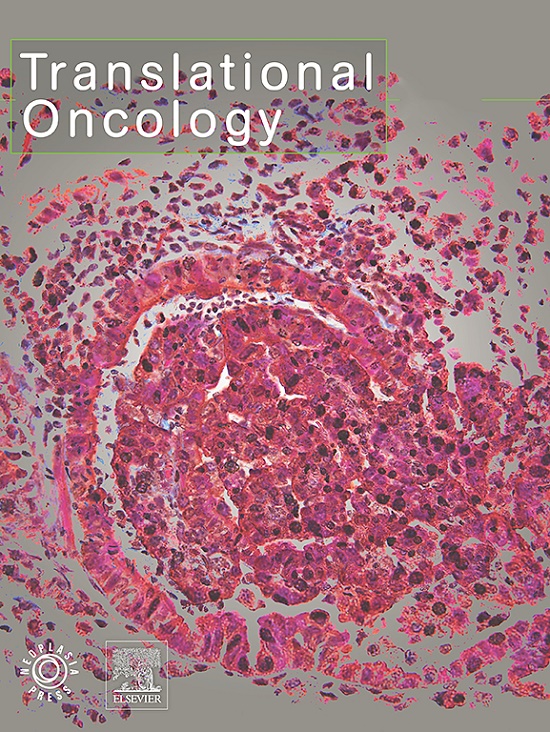Surgery, chemoradiotherapy, or chemoradiation plus immunotherapy: Treatment strategies for nonmetastatic anal squamous cell carcinoma
IF 5
2区 医学
Q2 Medicine
引用次数: 0
Abstract
The current standard of care for anal squamous cell carcinoma (ASCC) is definitive concurrent chemoradiotherapy (CRT). However, about a third of patients may experience treatment failure. Recently, immunotherapy has emerged as a novel strategy for metastatic ASCC patients. We evaluated the efficacy and safety of surgery, CRT alone, and CRT with immunotherapy (CRT-I) in 100 nonmetastatic ASCC patients, treated from April 2012 through May 2023, by determining survival outcomes and acute adverse events. The median (range) follow-up was 30.7 (7.6 to 134.9) months. The study cohort 3-year overall survival (OS), progression-free survival (PFS), distant metastasis-free survival (DMFS), and locoregional recurrence-free survival (LRFS) rates were 80.7 %, 62.2 %, 71.1 %, and 67.6 %, respectively. The Surgery group had significantly lower rates than the CRT and CRT-I groups for 3-year PFS (33.1% vs. 65.2% vs. 92.9 %, P < 0.001), DMFS (46.7% vs. 74.6% vs. 92.9 %, P = 0.002) and LRFS (37.0% vs. 73.3% vs. 92.9 %, P < 0.001), respectively. All patients receiving CRT-I were alive at last follow-up. Of 100 patients, 26 (26.0 %) experienced severe (≥ grade 3) acute toxicity. Of 24 patients receiving CRT-I, 8 (33.3 %) had severe acute toxicity. Using immunohistochemistry, peritumoural stromal infiltration by CD8+ T cells was significantly higher after CRT-I compared to before CRT-I and to after CRT alone. The addition of immunotherapy to CRT may be an effective first-line treatment option with favourable survival outcomes and acceptable toxicity for patients with ASCC. A prospective, randomized trial assessing the efficacy of CRT combined with a PD-1 inhibitor in patients with locally advanced ASCC is in progress.
手术、化放疗或化放疗加免疫疗法:非转移性肛门鳞状细胞癌的治疗策略
目前治疗肛门鳞状细胞癌(ASCC)的标准是明确的同步化学放疗(CRT)。然而,约三分之一的患者可能会出现治疗失败。最近,免疫疗法成为治疗转移性肛门鳞状细胞癌患者的一种新策略。我们评估了自2012年4月至2023年5月期间接受治疗的100例非转移性ASCC患者的生存结果和急性不良事件,评估了手术、单纯CRT和CRT联合免疫疗法(CRT-I)的疗效和安全性。随访时间的中位数(范围)为30.7(7.6-134.9)个月。研究队列的3年总生存率(OS)、无进展生存率(PFS)、无远处转移生存率(DMFS)和无局部复发生存率(LRFS)分别为80.7%、62.2%、71.1%和67.6%。手术组的 3 年 PFS(33.1% vs. 65.2% vs. 92.9%,P = 0.001)、DMFS(46.7% vs. 74.6% vs. 92.9%,P = 0.002)和 LRFS(37.0% vs. 73.3% vs. 92.9%,P = 0.001)分别明显低于 CRT 组和 CRT-I 组。所有接受CRT-I治疗的患者在最后一次随访时均存活。在100名患者中,26人(26.0%)出现严重(≥3级)急性毒性。在接受CRT-I治疗的24名患者中,8人(33.3%)出现严重急性毒性。通过免疫组化,CRT-I 后 CD8+ T 细胞的瘤周基质浸润明显高于 CRT-I 前和单纯 CRT 后。对ASCC患者来说,在CRT基础上增加免疫疗法可能是一种有效的一线治疗方案,不仅生存率高,毒性也可接受。一项评估CRT联合PD-1抑制剂对局部晚期ASCC患者疗效的前瞻性随机试验正在进行中。
本文章由计算机程序翻译,如有差异,请以英文原文为准。
求助全文
约1分钟内获得全文
求助全文
来源期刊

Translational Oncology
ONCOLOGY-
CiteScore
8.40
自引率
2.00%
发文量
314
审稿时长
54 days
期刊介绍:
Translational Oncology publishes the results of novel research investigations which bridge the laboratory and clinical settings including risk assessment, cellular and molecular characterization, prevention, detection, diagnosis and treatment of human cancers with the overall goal of improving the clinical care of oncology patients. Translational Oncology will publish laboratory studies of novel therapeutic interventions as well as clinical trials which evaluate new treatment paradigms for cancer. Peer reviewed manuscript types include Original Reports, Reviews and Editorials.
 求助内容:
求助内容: 应助结果提醒方式:
应助结果提醒方式:


